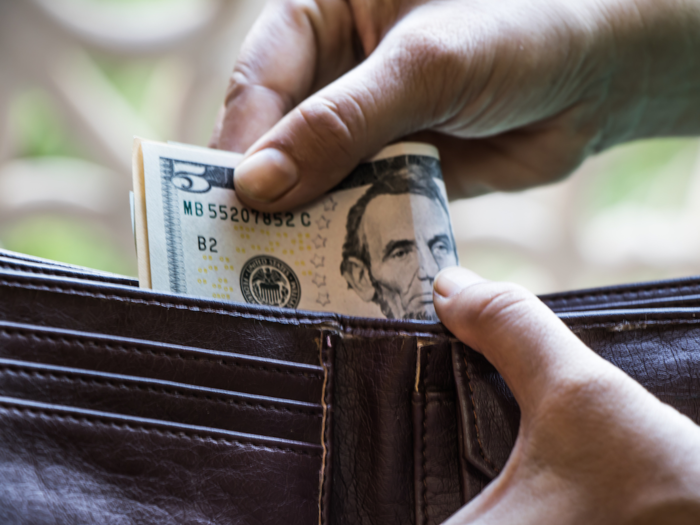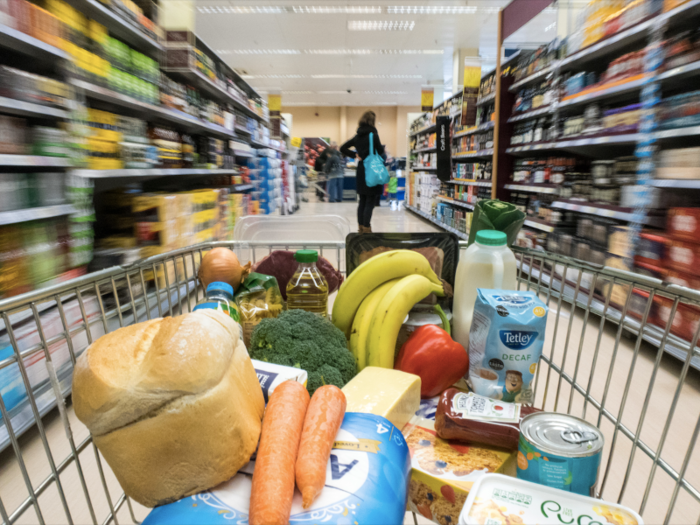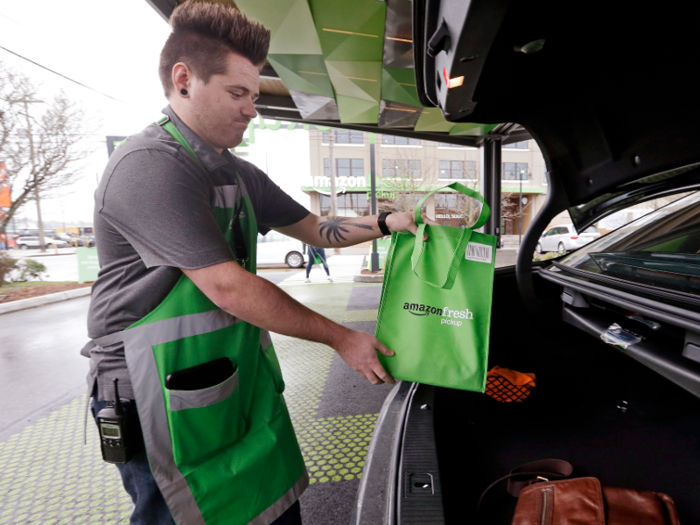- Home
- slideshows
- miscellaneous
- We order all of our groceries online, and it saves us more than $750 a month in time and money
We order all of our groceries online, and it saves us more than $750 a month in time and money
Our Amazon Prime membership costs us $119 a month. If you hate crowds and lines that come with post-work and weekend grocery shopping, the membership is worth it.

If you agree with the adage 'time is money,' time spent shopping has a dollar value — we estimate that we make $640 dollars in time alone

Benjamin Franklin wrote that "time is money" way back in 1748.
I've come to agree with him to an extent. The one-liner feels especially relevant when you do any kind of freelance work, as I do. For example, if it takes me five hours to write an essay for a $400 fee, I know that one hour of my time is worth $80.
Let's stick with that value and apply it to everyday life. If one hour is worth $80 and one trip to the grocery store takes at least one hour, and the average family takes 1.6 trips per week (let's round up to two), that's $160 worth of time saved per week. And that's a whopping $640 per month.
To push this further, sometimes ordering groceries online helps me make money. Let's use Prime Now to explain. With Amazon's Prime Now service, you can have groceries delivered within two hours. And when you order at least $35 worth of goods, there is no delivery fee.
Again, the convenience and speed of this service are worth actual money. If I spend those same two hours writing (at about $80 an hour in value, remember), and I spend $50 on groceries, that's $160 minus $50. So while "grocery shopping," I actually made $110.
We save about $104 because we're not tempted to make impulse purchases

If I physically go into a Whole Foods, I will, without fail, purchase five or more items I had no intention of buying. Sometimes this works out and we discover a new cereal, granola bar, or kimchi we all like.
Other times, that $5.21 guacamole doesn't get eaten and it's money lost. I use guacamole as an actual example. I went to Whole Foods last month and that guacamole, a head of celery, and a bag of pretty terrible chickpea crackers were the casualties. Plus an hour of my time. In food alone, it was a loss of $13. Multiply that by the two trips per week, and I estimate we save $104 a month at the very least in impulse buys alone.
When we shop via AmazonFresh, the "Past Purchases" or "Buy It Again" options help us order our staples — it even shows how many times we've ordered them. It's difficult to "spot" an interesting new product while shopping online — not impossible, but screen-scrolling is far less thrilling than strolling down an aisle and tossing colorful packages into your non-virtual cart.
We save about $12 a month on the gas we don't use, too.

We save on gas as well, though it's a small amount per month. Our car goes an average of 17 miles per gallon in the city and gas cost $3.57 per gallon on average last month in LA. The closest Whole Foods to us is 3.5 miles away, so a seven-mile trip (there and back) uses 0.41 gallons, or $1.47. If, like the average family, we went to the market twice per week, we'd use about $11.75 per month on grocery store gas alone.
Here's what our monthly delivered grocery plan and bill actually look like for our family of three

We cook dinner at home on weekdays, and we tend to go out on weekends. We pack weekday lunches for two of us (my partner's work provides his lunch), and we make easy hot breakfasts on weekdays: eggs, toast, oatmeal, fresh fruit, cereal, et cetera.
We meal-plan very casually — on the drive home from our daughter's piano lesson, for example — and we order ingredients needed for those planned meals. Breakfast and lunch staples are on repeat and easy to add to our cart via our personal AmazonFresh browser.
Given that, here's what our orders looked like this past spring.
In March, we ordered groceries five times for a grand total of $301.08, plus $29 on (optional) tips. In April, we ordered groceries fives times for a total of $470.41, plus $38 in tips. And in May, we spent $407.92, plus $39 in tips. That averages out to $391.14 per month in groceries and about $35 monthly in tips.
As you can see, ordering groceries by delivery saves us money, especially on impulse buys and time. According to estimates made by the USDA, I'm on track with this idea. In June, the USDA estimated that "thrifty" families of two (with adults in my age bracket) spent $386.40 on food at home, "moderate" spenders bought $612.90 worth of groceries, and "liberal" spenders spent $766.60 on food for home. In the same categories, families of four would spend $646.80, $1,062 and $1,288.20, respectively.
While the USDA doesn't offer specific estimates on families of three, you can see that our average of $391.14 puts us closest to the spending of a "thrifty" family of two. If you add in our Prime membership dues (about $10 per month) and our tips ($35), we're at $436.14 per month, still below the "moderate budget" for the family of two.
We didn't start this journey in order to save money, but that's been a happy secondary result of the lifestyle change. First and foremost, we love that it frees up so much of our time to do other things.
I'm pretty sure Benjamin Franklin would understand.
- Read more:
- My wife and I spend $480.40 per month on groceries and cook 95% of our meals — here's exactly what we buy
- We're a vegan millennial couple that spends around $415 a month on groceries —here's exactly what we buy
- I used Costco and Sam's Club's apps to see which bulk retailer is the king of online shopping — and one of them was the obvious winner
- I went to Costco for the first time in my life and it was completely overwhelming — but I get what the hype is about
Popular Right Now
Popular Keywords
Advertisement